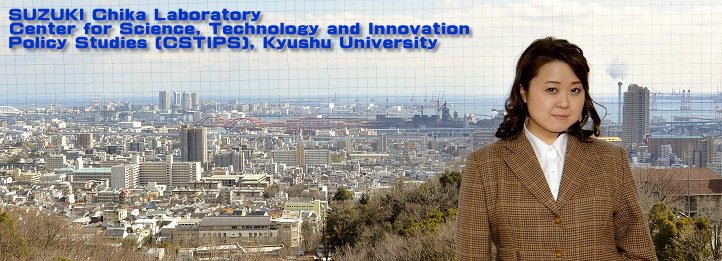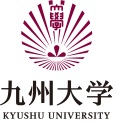

These are the contact details of the SUZUKI Chika Laboratory, Center for
Science, Technology and Innovation Policy Studies (CSTIPS), Kyushu University
●Marine Mathematical Statistics: Analysis of environmental change in areas affected by the Water Pollutant Control Law





Some people argue that no relationship is observed between regulations
to improve water quality and the generation of red tides in the eutrophic
Tokyo Bay. However, some relationship may be found between regulation of
the inflow load of total phosphorus (T-P) and red tide dynamics (fluctuations
in the target red tide criteria). In this study, we created a“red tide
index model based on the number of cells” as a method of applying multiple
regression analysis, and attempted to examine the transition of the contribution
rate of the model. This analysis revealed that regulating the total amount
of N and P changed the T-P in seawater, which did not affect the red tide
index. However, we found that regulating the total amount not only changed
the T-P but also the load of total nitrogen (T-N) when Skeletonema sp.
(the red tide index) changed. We concluded that regulating the total amounts
of N and P significantly reduced the loads of T-N and T-P, which altered
the relationships between environmental factors. This is likely why the
red tide index experienced change although no significant change was discovered
in T-P in seawater. Analyses based on other methods are also ongoing.
Reference:Chika Suzuki,「Relationship between the environmental factors and the dynamic state of Skeletonema costatum, the principal species in red tide formation in Tokyo Bay following the introduction of N and P reduction measures」2013
●Marine Bioresource Sciences: Extraction and the use of the algal photosynthesis pigmentReference:Chika Suzuki,「Relationship between the environmental factors and the dynamic state of Skeletonema costatum, the principal species in red tide formation in Tokyo Bay following the introduction of N and P reduction measures」2013
Reference:Chika
Suzuki,「Assessing change of environmental dynamics by legislation in Japan, using red tide occurrence in Ise Bay as an indicator」2016
We are currently conducting studies on seaweeds that have antitumor and slimming effects, but we cannot disclose details of this research to protect our industrial property rights,
* Let us follow the slimming effect on Chika Suzuki (the laboratory organizer) and other people involved in the study!
●Marine policy: Appropriate use of the Water Pollutant Control Law and maintenance of the Satoumi* Let us follow the slimming effect on Chika Suzuki (the laboratory organizer) and other people involved in the study!
Environmental conservation of closed water areas is closely related to
this issue. Here, I refer to the results of the hearings with Mr. Toshizo
Ido, the governor of Hyogo Prefecture and Chair of the International EMECS
Center, which offer insight into how to tackle the issue effectively. On
the 40th anniversary of the Act on Special Measures concerning the Conservation
of the Environment of the Seto Inland Sea, a new declaration (the “Sea
in the Seto Inland Sea Declaration”) was established, but its realization
requires legal endorsement. Mr. Ido organized a number of Diet members
to work together to form the Federation of Diet Members for Seto Inland
Sea Reconstruction (Senior Advisor: Chairperson Prime Minister Shinzo Abe;
Secretary General Representative: Yasuhisa Shiozaki; Representative: Shinsuke
Suematsu), and he is currently working towards the legal enactment of the
Declaration (as of December 2013, when I visited him). I asked him specifically
about the preparations for the conference of the Seto Inland Sea Environmental
Conservation(2013), involving the Governor and the mayor, and at that time
I was considering how I could tackle the issue as a young researcher studying
“Seto Inland Sea Reconstruction.”
●Marine education: The use of mechanized creatures and education using
a simple differential volumeter-productmeterFisheries civil engineering is the fusion of fisheries science and civil
engineering. It differs from marine engineering in that it places emphasis
on living creatures. Programs for the education of fisheries civil engineers
in university have not been adequately nurtured. Japan, historically a
fishing country, is currently facing a number of problems (such as the
Great East Japan Earthquake) that are directing public attention away from
fish. It is imperative that we train fisheries civil engineers who can
contribute to fisheries infrastructure development projects (Fisheries
Agency), not only at the university level but at all stages of school education,
including compulsory education. However, in the school environments at
lower levels, it is still difficult to offer an “opportunity to compare
and learn marine environments and biological environments under natural
conditions,” which forms the basis of fisheries civil engineering. Issues
relating to the coastal environment, including the sea forest (seaweed
beds), and the utilization of its biological resources are attracting global
attention and are perceived as increasingly important. In this study, we
focused on mechanimals (mechanical animals) and a product meter (a photosynthesis-measuring
instrument), and have continuously examined their possibilities for use
as part of the educational materials for training fisheries civil engineers.
Reference:Chika Suzuki, Akira Kurashima, Yasutsugu Yokohama, Genjirou Nishi, Takeshi Sato, Sadao Tezuka, Takashige Sugimoto, 「Training and education of fisheries civil engineers through case studies involving a mechanized fish “mechanimal” and a “productmeter” for measuring photosynthesis」2013
●Survey and Analysis Regarding Constituent Requirements of Innovation Ecosystem(As
a cooperation study)Reference:Chika Suzuki, Akira Kurashima, Yasutsugu Yokohama, Genjirou Nishi, Takeshi Sato, Sadao Tezuka, Takashige Sugimoto, 「Training and education of fisheries civil engineers through case studies involving a mechanized fish “mechanimal” and a “productmeter” for measuring photosynthesis」2013
Even though various assistance measures have been implemented at research institutes including universities in Japan aiming at setting up "Innovation ecosystem" for creating innovation autonomously and continuously as well, its specific evaluation method has not necessarily been established. Upon analyzing successful cases of innovation ecosystem establishment in consideration of such situation, the study aims to develop evaluation indicators and analysis method, especially for center of innovation (COI) project. ※Contribution in the marine field.

